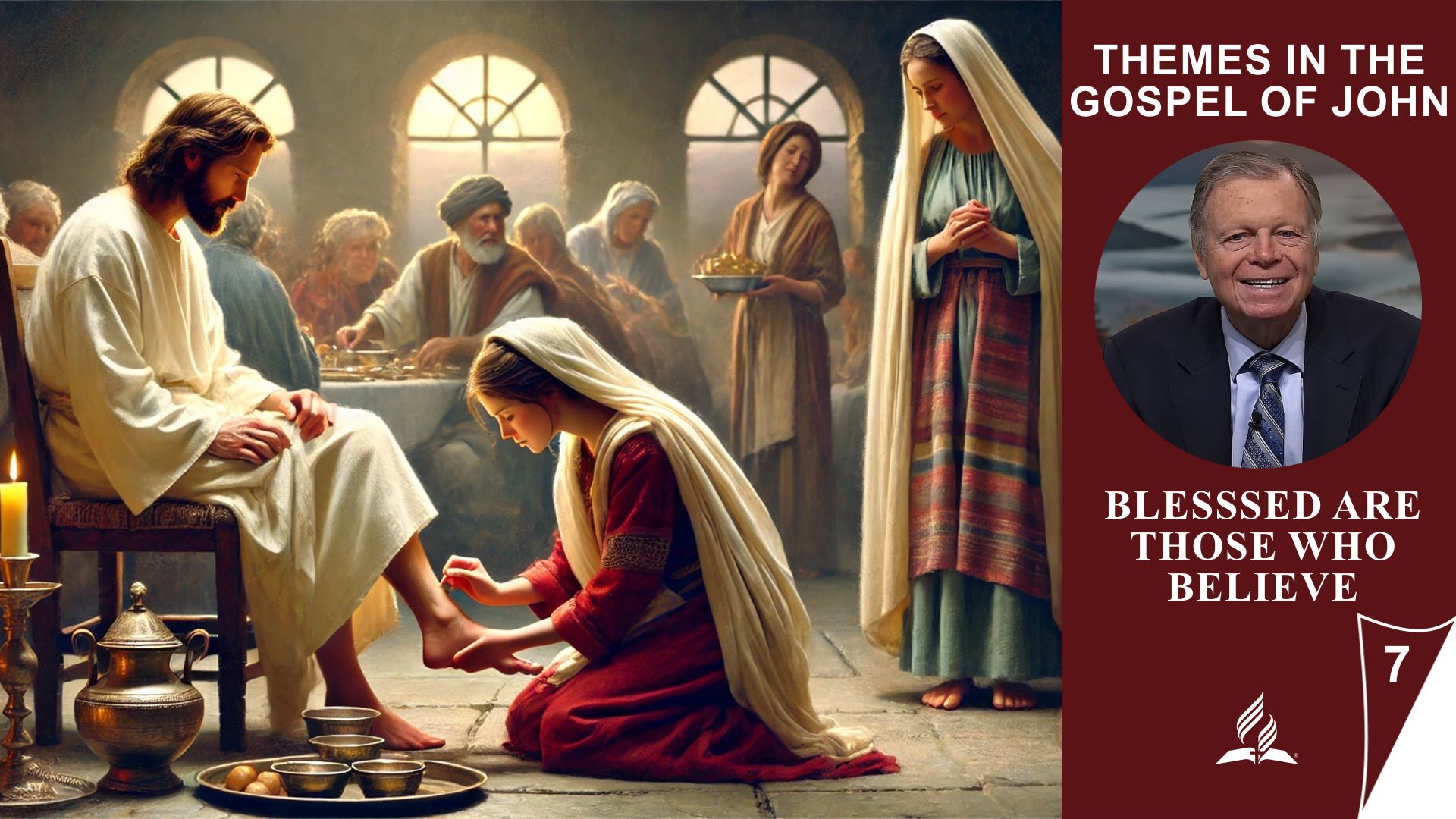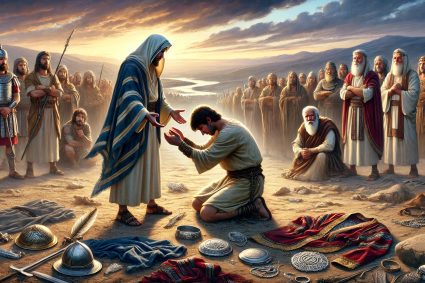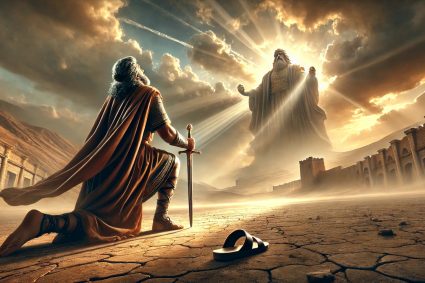
Series JESUS IN THE GOSPEL OF JOHN with Pastor Mark Finley |
Lesson 7.Blessed Are Those Who Believe |
Witnesses of Faith in the Gospel of John |
Lesson 7 of the Gospel of John invites us to view faith through the eyes of various witnesses of Jesus and to recognize the significance of faith without visible evidence. From Abraham to Thomas, it is shown how people in different situations responded to Jesus—with trust, doubt, or unconscious acknowledgment. These witnesses illustrate that faith often requires courage and enables a deeper insight into God’s workings. Jesus emphasizes the blessedness of faith that is not based on visible signs but on trust. By living this faith, we gain access to a vibrant relationship with God that gives us hope and life.
Memory Text: John 20:29 – “Jesus said to him, ‘Thomas, because you have seen Me, you have believed. Blessed are those who have not seen and yet have believed’.”
Content:
7.1 Harking Back to Abraham
Abraham as a Witness of Faith and Promise
Jesus refers to Abraham to emphasize the continuity between the faith of the patriarchs and His own message. In John 8:56, Jesus shows that Abraham “saw his day” from afar and rejoiced over it—a reference to the Redeemer that Abraham experienced as part of God’s promise. Paul picks up this thought in Romans 4 by presenting Abraham as an example of justification by faith, independent of the works of the law. This emphasis on faith as the foundation of the relationship with God makes Abraham the father not only of the Jewish people but of all believers. Through Abraham’s story, the importance of faith that trusts in God’s promise is highlighted—a connection that Jesus reveals as the fulfillment of this promise.
7.2 The Witness of Mary
Mary’s Precious Gift as an Expression of Faith
Mary’s act of anointing Jesus with expensive oil was a profound testimony of her love and gratitude toward Him. The costly oil she used lavishly symbolized her complete devotion and recognition of Jesus as the one who brings forgiveness and new life. Her gesture was not only a sign of honor but also a prophetic act pointing to Jesus’ impending sacrifice. While Judas showed selfish motives in his criticism, Jesus defended Mary because He recognized the sincerity of her love and the faith in her heart. This story reminds us that Jesus looks beyond the exterior and knows the hearts—a call for us to let His transformative righteousness enter our lives.
7.3 The Unwitting Witness of Pilate
Pilate’s Unconscious Testimony of Truth
Pilate, the Roman governor, played a central role in the trial against Jesus and gave an involuntary testimony about Him. Although he declared Jesus innocent three times, he ultimately condemned Him to death—a decision influenced by the pressure from religious leaders and the crowd. By placing the sign “Jesus of Nazareth, the King of the Jews” above the cross, Pilate unwittingly affirmed Jesus’ true identity as portrayed in the Gospel of John. The drama surrounding Pilate’s decision highlights the danger of being swayed by external influences instead of following one’s conscience. This event reminds us of the importance of steadfastly standing by the truth, even when circumstances create pressure and doubt. Pilate’s wavering serves as a warning against the temptation to betray the convictions of the heart to please the masses.
7.4 The Witness of Thomas
From Doubt to Confession of Faith – Thomas’ Lesson
Thomas’ story shows how doubt can be transformed into a stronger conviction of faith. Thomas made the mistake of tying his faith to physical evidence and only acknowledged the resurrection under his own conditions. However, Jesus met him with understanding and invited him to touch the wounds in His hands and side, leading Thomas to a powerful confession: “My Lord and my God!” (John 20:28). Jesus’ words, “Blessed are those who have not seen and yet have believed,” remind us that true faith is not based on visible evidence but on trust in God’s testimony and His creation. This encounter teaches us that doubt can often be part of the journey of faith, but the goal is to reach a trust that exists even without “seeing.” The faith that Thomas ultimately found is an open trust in the reliability of God and His promises.
7.5 Our Witness of Jesus
Our Testimony – Faith Strengthened by History and Experience
The Gospel of John calls us to give our own testimony about Jesus, inspired by the testimonies of those who experienced Him directly. We have the advantage of not only reading about Jesus’ life and miracles but also recognizing the fulfillment of many of His prophecies in history, such as the destruction of the temple and the worldwide spread of the Gospel. These historical confirmations provide us with reasons for faith that go beyond mere eyewitness accounts. Today, we are called to accept Jesus as the Savior through Scripture and the power of the Holy Spirit and to share this experience. Each of us has a unique story and a personal experience with Christ, and by sharing them, we continue what the first witnesses of Jesus began—a testimony of faith that also works life-changing in our world.
7.6 Summary
Faith Without Seeing – The Path to True Blessing
In Lesson 7, the Gospel of John emphasizes the importance of faith that is not based on visible evidence but on trust in God’s word. Through the testimonies of Abraham, Mary, Pilate, and Thomas, John illustrates various responses to Jesus and highlights the strength of faith that goes beyond the visible. Abraham trusted the promise, Mary showed deep gratitude, Pilate gave an unintended testimony, and Thomas learned to believe without seeing. Jesus Himself praises the blessedness of those who believe without proof and invites us to trust in God’s plan and word. This lesson reminds us that true faith is the foundation for a deeper relationship with God—a relationship that grants us life in His name.
(Visited 21 times, 1 visits today)




















